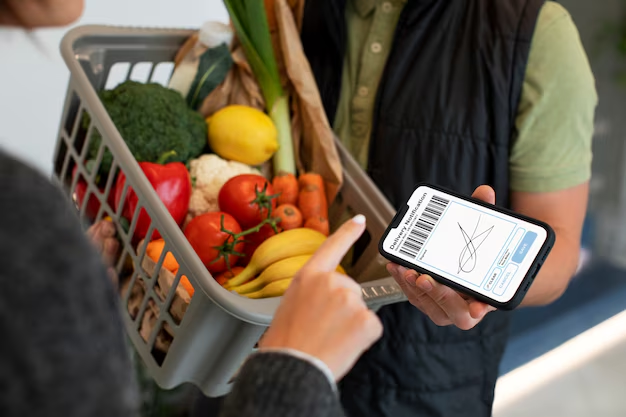Understanding SNAP and EBT: Are They the Same?
Navigating the world of food assistance programs can be a bit like walking through a maze—there's a lot to understand, and it's easy to get confused. Two commonly confused terms in this realm are SNAP and EBT. If you've ever asked yourself, "Are SNAP and EBT the same?" you're certainly not alone. Let's dissect these terms and unravel the mysteries behind this crucial component of social welfare in the United States.
🤔 What is SNAP?
SNAP, the Supplemental Nutrition Assistance Program, is a federal aid program aimed at combating hunger in the United States. It provides eligible low-income individuals and families with funds to purchase food. Managed by the United States Department of Agriculture (USDA), SNAP is the largest food assistance program in the country.
🎯 Key Features of SNAP:
- Eligibility: Based on income, household size, and other factors.
- Purpose: To boost food purchasing power among low-income households.
- Operation: Functions on a monthly benefit system.
💳 What is EBT?
EBT, standing for Electronic Benefits Transfer, is the method by which SNAP benefits are distributed and utilized. It acts as a debit card system that made the transition from paper food stamps to a more secure, electronic method.
🎯 Key Features of EBT:
- Usage: SNAP recipients use EBT cards to buy eligible food items.
- Security: Reduces fraud and enhances ease of transaction.
- Universality: Accepted in a wide range of grocery stores and farmers markets.
🚦 How SNAP and EBT are Interconnected
While SNAP and EBT are distinct terms, they work hand-in-hand. Think of SNAP as the program that provides the financial benefits and EBT as the technology that allows recipients to access and use those benefits. Without EBT, SNAP would revert to less secure and less efficient systems of benefit distribution.
🗝️ Key Differences:
- SNAP is the policy framework and funding source for food assistance benefits.
- EBT is the tool that beneficiaries use to access their SNAP benefits.
💼 Understanding Eligibility for SNAP and EBT
Not everyone qualifies for SNAP, and therefore not everyone will receive an EBT card. Eligibility is typically determined by several factors, such as:
Income and Asset Guidelines
- Households must meet income criteria relative to the federal poverty line.
- Assets like money in a bank and certain properties influence eligibility.
Household Composition
- The number of people living and eating together in a household is considered.
Employment and Other Circumstances
- Employment status, job-seeking efforts, and certain household expenses are evaluated.
🛒 How to Use an EBT Card
Using an EBT card is straightforward and similar to using a debit card. Here's a brief guide on how to effectively use your card:
- Check Your Balance: Before shopping, know your available SNAP benefit balance.
- Select Eligible Items: Only specific food items are eligible. Non-food items like toiletries are excluded.
- Pay at Checkout: Swipe the EBT card at participating stores to pay for eligible items.
📍 Where Can You Use an EBT Card?
EBT cards are accepted across a wide range of retail locations. This includes major grocery chains, some convenience stores, and certain farmers markets, contributing to increased accessibility to nutritious foods.
Store Options:
- Large Retail Chains: Walmart, Target, and others.
- Local Grocery Stores: Many regional grocers accept EBT.
- Farmers Markets: In growing numbers, fresh local produce is available via EBT.
🔄 Transitioning from Food Stamps to EBT
The transition from paper food stamps to EBT cards has been one of the most significant changes in the distribution of SNAP benefits. This shift greatly improved the efficiency, security, and user experience of benefit distribution.
🌟 Benefits of EBT Over Food Stamps:
- Reduced Stigma: EBT cards look like credit cards, minimizing stigma at checkout.
- Increased Security: Less prone to theft and fraud compared to paper stamps.
- Ease of Use: Simple electronic transactions.
🌱 The Impact of SNAP and EBT on Communities
Both SNAP and EBT play critical roles in supporting low-income families and stimulating regional economies. Participation in SNAP has been linked to:
- Improved Health: Access to nutritious food can lead to better health outcomes.
- Economic Stimulation: SNAP benefits spent at local stores help bolster local economies.
- Community Growth: Providing food security can enable families to focus on contributing to their communities.
🎯 Practical Tips for SNAP and EBT Use
To make the most of SNAP benefits and EBT cards, consider the following suggestions:
- Plan Your Purchases: Maximize your budget by planning your meals and purchasing nutrient-dense foods.
- Stay Informed: Keep up with any changes in SNAP policy that may affect your benefits.
- Engage in Community: Participate in community programs that align with SNAP, like nutritional workshops.
📊 Quick Summary: SNAP vs. EBT
Here’s a concise comparison to quickly differentiate between SNAP and EBT:
| Aspect | SNAP | EBT |
|---|---|---|
| Purpose | Provides food assistance benefits | Delivery mechanism for SNAP benefits |
| Eligibility | Based on income, assets, and household size | Automatic if SNAP-eligible |
| Function | Financial aid for purchasing food | Debits SNAP benefits for eligible purchases |
| Use | Policy and funding | Electronic card system |
| Accessibility | Available nationally with varied state guidelines | Accepted at numerous retail outlets |
Understanding the nuances of SNAP and EBT can enhance your ability to navigate the social welfare landscape, boost your food security, and empower participation in community life. By demystifying these often-confused terms, individuals and families can better leverage the resources available to support their nutritional needs and improve their overall quality of life.
